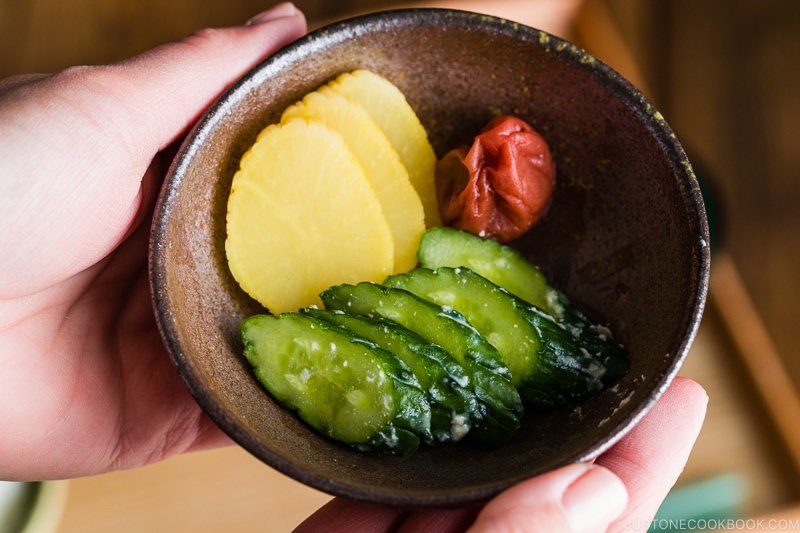
Kasuzuke, or sake lees pickle, is a type of tsukemono (Japanese pickles) made with sake lees, the leftover from the refining process of sake production. With a deep aroma and slightly alcoholic flavor, Kasuzuke is perfect for marinating fish, meat, and vegetables.
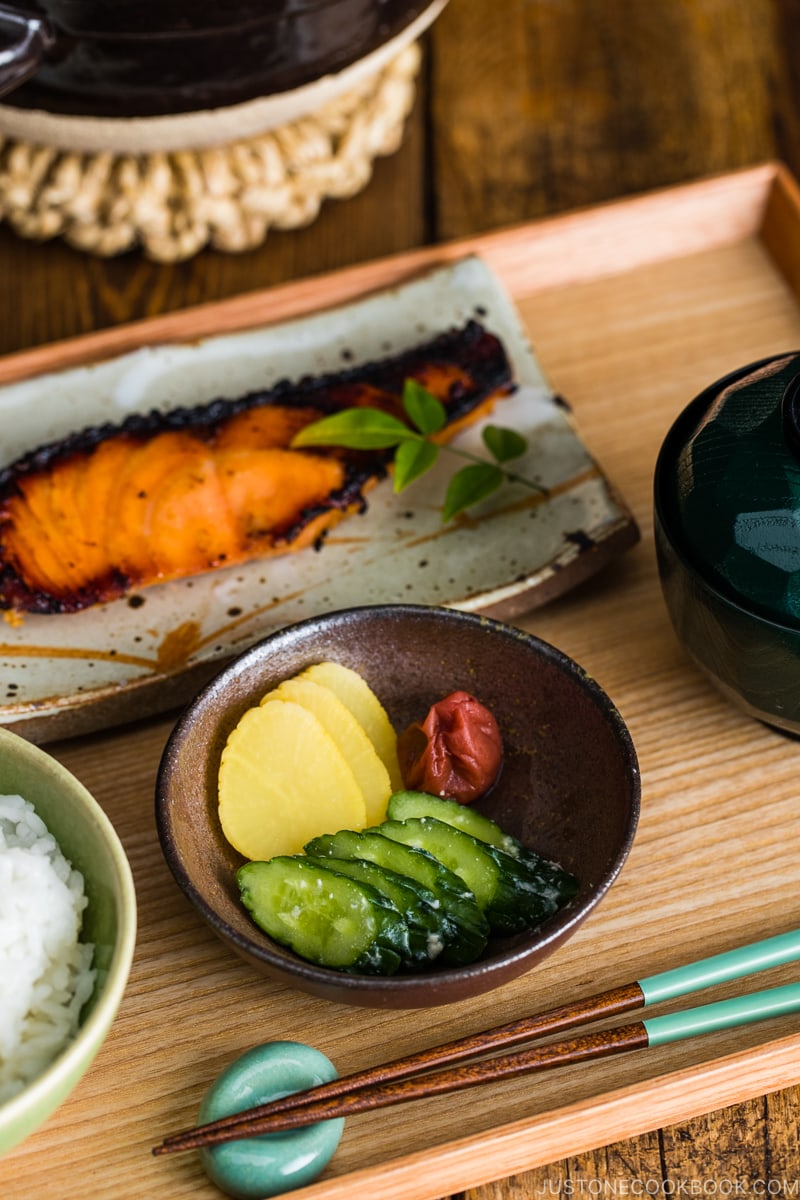
Kasuzuke (粕漬け), or sake lees pickle, is a type of tsukemono (漬物, Japanese pickles) made with sake lees, the leftovers from the refining process of sake production. It is a traditional Japanese dish that represents the essence of Japanese cuisine. Thanks to the fermented ingredient and other valuable nutrients, kasuzuke is an excellent source of nourishment.
This recipe is a part of the tsukemono series that I’m introducing on Just One Cookbook. For a detailed introduction, please read Tsukemono: A Guide to Japanese Pickles.
Different Types of Tsukemono:
Tsukemono has several types based on the pickling agent:
- Shiozuke (塩漬け) – salt
- Suzuke (酢漬け) – vinegar
- Amazuzuke (甘酢漬け) – sugar and vinegar
- Misozuke (味噌漬け) – miso
- Shoyuzuke (醤油漬け) – soy sauce
- Kasuzuke (粕漬け) – sake kasu (lees)
- Shiokojizuke (塩麹) – rice koji/mold-cultured rice
- Nukazuke (糠漬け) – nuka (rice bran)
- Karashizuke (からし漬け) – Japanese hot mustard karashi
- Satozuke (砂糖漬け) – sugar
Today we’ll focus on the kasuzuke and how to make cucumber kasuzuke (cucumber pickled in sake less).
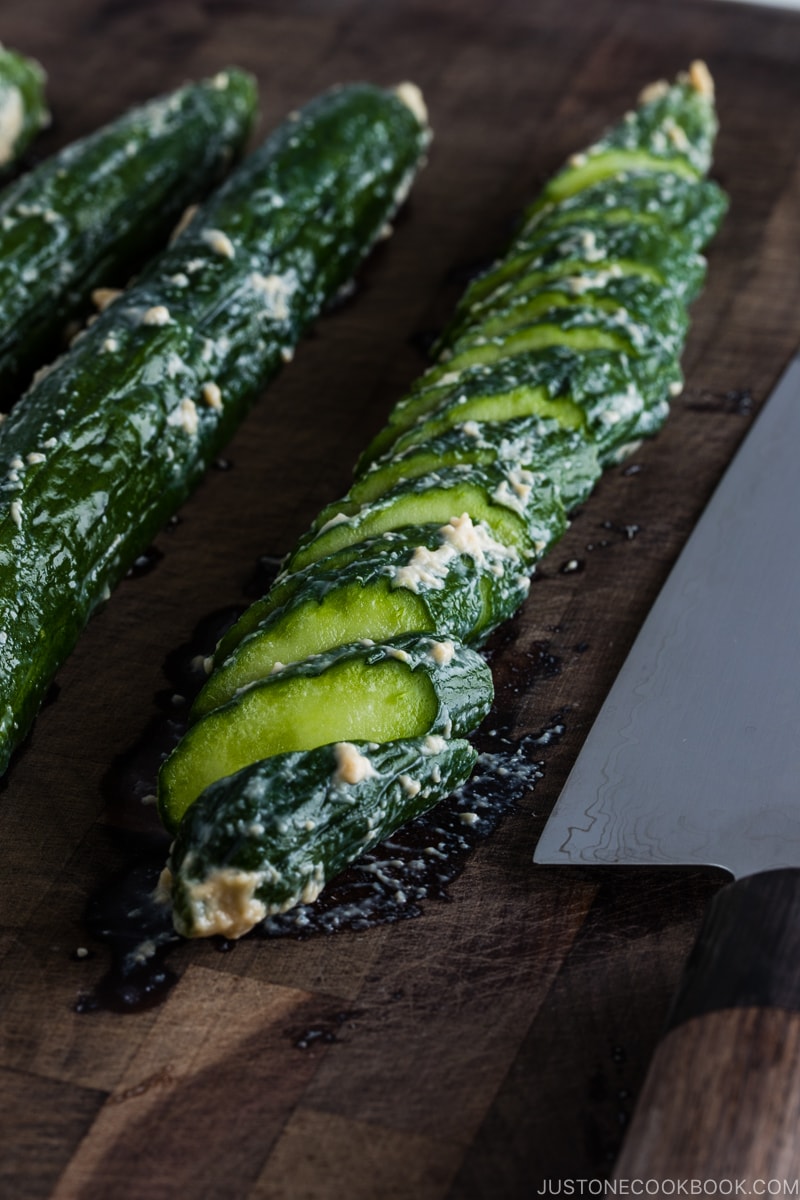
What is Kasuzuke?
Kasuzuke (粕漬け) is to pickle ingredients in sake lees (kasu) marinade, or it also refers to the sake lees-pickled food. This pickling method is great for marinating fish, meat, and vegetables.
Originally made in the Kansai region of Japan, the history of Kasuzuke can be traced back as early as the Nara period, twelve hundred years ago. The first vegetables that was pickled with sake less was white melon and it was named Narazuke (奈良漬け). Later vegetables such as cucumbers, eggplants, and bitter melons were also used in making kasuzuke. Records have shown that Buddhist monks served these kasuzuke to samurai as imperishable wartime food.
During the Edo period of the 17th century, sake producers started promoting kasuzuke throughout Japan and kasuzuke remains popular today.

What Are Sake Lees?
Sake lees or Sake Kasu (酒粕) is basically the leftover by-product from the suspended solids after sake is fermented and refined.
Larger sake producers extract the sake from the lees by machine and the kasu comes out in thin dry sheets called itakasu (板粕). Meanwhile, smaller producers press their sake by hand and this method yields kasu that is moist and chunky called namakasu (生粕).
You can purchase sake lees all year round, but the fresh sake lees are available only in the winter, between February and March, when sake production takes place.
You can find sake kasu (sake lees) at Japanese grocery stores (I buy mine at Nijiya) or local sake brewery if there is any.
How to Make Kasuzuke (Sake Lees Pickling)
This method may sound complicated, but it is actually quite simple. You just need to follow these three steps:
- Make kasudoko (粕床) – the sake lees “marinade” or fermentation mixture
- Prepare the ingredients by withdrawing the moisture from them
- Marinade the ingredients in kasudoko
Next, we’ll cover how to make the kasudoko, where the deliciousness begins.
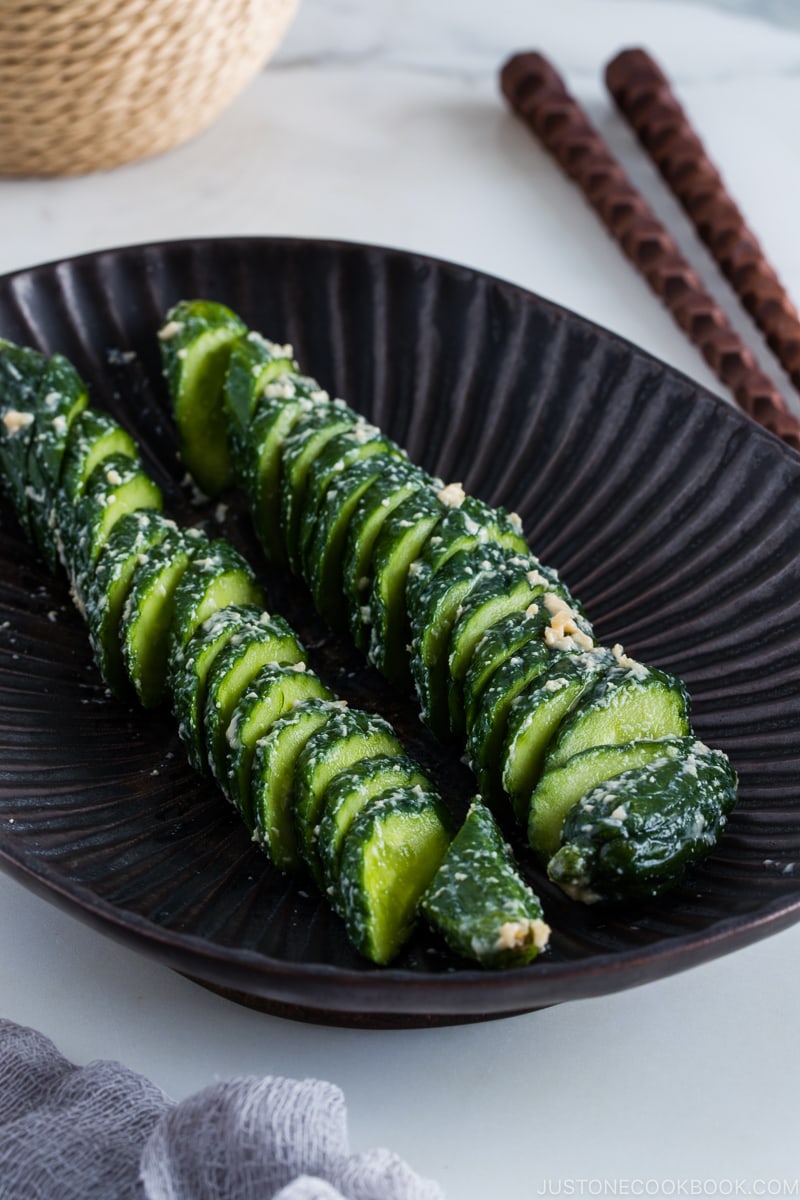
How to Make Kasudoko (Pickling Marinade)
Kasudoko is a mixture of sake lees, miso, mirin, sake, sugar, and salt. You basically season the sake lees with additional condiments. Every household makes it slightly different with varying ratio and combination, so have fun making your own kasudoko.
Miso
Typically white miso is used for kasudoko, but feel free to season sake lees with the miso you have in your refrigerator.
Mirin vs. Sake
When you make kasudoko for fish and meat, sake is always used to remove strong odor and to keep the food safe. There are various types of sake in the market, but I recommend using only Hon-Mirin (true mirin) that has higher alcohol %. However, it is not easy to get Hon-Mirin unless you have access to well-stock Japanese grocery stores.
The more common Mirin-like or Mirin-type condiment has very low alcohol % and it’s not ideal to substitute Hon-Mirin. Therefore, I recommend using sake and sugar. If you can purchase Hon-Mirin, feel free to use it instead of sake and sugar.
More about Mirin in my Mirin Pantry page.
Sugar
I use organic cane sugar (from Trader Joe’s)
Salt
I use Diamon Crystal Kosher Salt. Why kosher salt? Kosher salt or sea salt is typically used in cooking in the U.S. If you use table salt, please use half the portion of salt I mention.
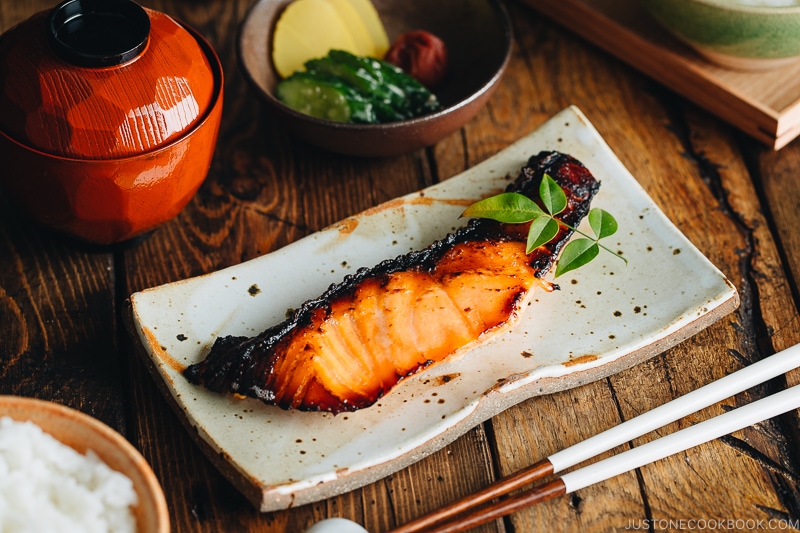
Best Ingredients to Pickle in Kasuzuke
Kasuzuke has a distinct smell but the alcoholic undertone is much more subtle.
The common ingredients for kasuzuke include:
- Vegetables (cucumber, carrot, turnip, daikon, eggplant, ginger, etc)
- Fish (cod, salmon, sea bream, red snapper, butterfish) or seafood (scallop, abalone, squid)
- Meat (beef, chicken, pork)
I’ve also found some interesting ingredients mentioned online that they taste good:
- Cheese (think fancy cheeses fermented with champagne or port wine etc)
- Marshmallow (Why not? Marshmallow Kasuzuke with dark chocolate sounds pretty good to me)
- Dried food (dried wakame seaweed, dried shiitake mushrooms)
My family enjoys this cucumber kasuzuke in a typical Japanese homestyle meal, featuring rice, grilled fish, and miso soup.
Will you try your hand in kasuzuke? If yes, what are you going to pickle in your first kasuzuke?
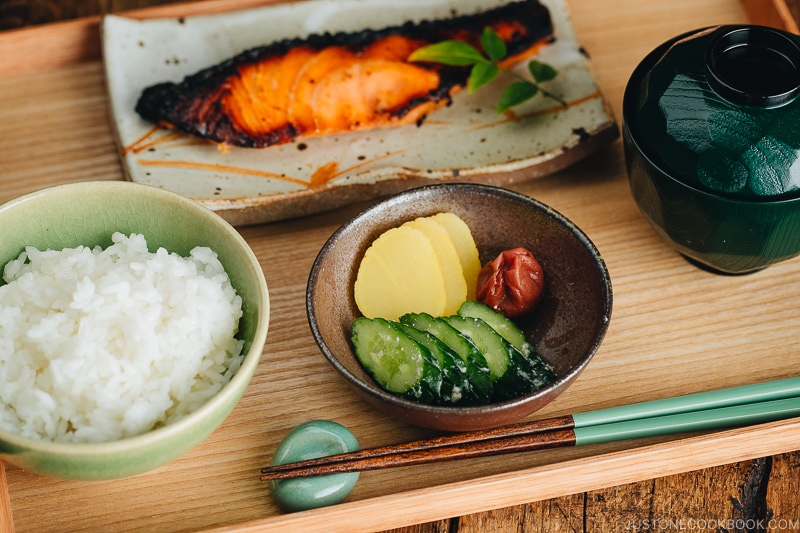
Japanese Ingredient Substitution: If you want to look for substitutes for Japanese condiments and ingredients, click here.
Sign up for the free Just One Cookbook newsletter delivered to your inbox! And stay in touch with me on Facebook, Pinterest, YouTube, and Instagram for all the latest updates.
Tsukemono – Kasuzuke (Sake Lees Pickling)
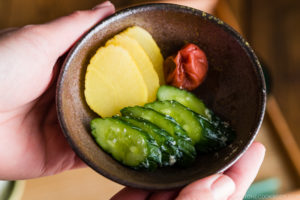
Kasudoko (Sake Lees Marinade)
- 1 lb sake lees (sake kasu) ((434 g; at room temperature))
- 2 Tbsp miso ((40 g; I used White Miso/Shiro Miso))
- 4 Tbsp sugar ((60 g))
- 1 Tbsp salt ((10 g))
- 3 Tbsp sake ((45 ml))
Cucumber Kasuzuke
- 5 Japanese cucumbers ((500 g))
- 1 Tbsp salt ((2 % salt of the cucumber weight; 10 g))
- Kasudoko ((ingredients above))
-
Gather all the ingredients for Kasudoko. Put sake lees in a medium bowl and bring it to room temperature on the counter so it becomes much more pliable.
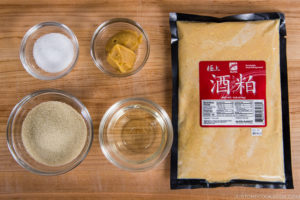
-
Check the texture of sake lees with your fingers. If they feel solid firm, add sake first and microwave for a few seconds until it becomes pliable. Otherwise, combine sake lees with miso, sugar, and salt first.
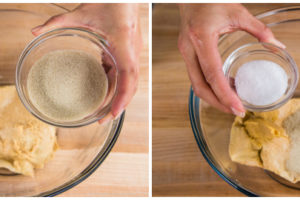
- Using your hand, mix the ingredients and knead well until well combined.
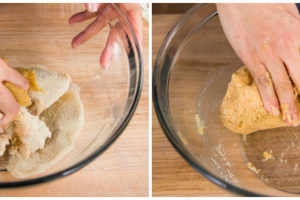
-
Add sake a little bit at a time to combine with the sake lee mixture. See the consistency to see if you need to add more sake. Each sake lee brand may have a different consistency and you may not need all of sake (or you may need more). The consistency you’re looking for is similar to miso, not too loose not too hard.
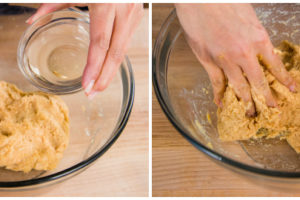
- Knead until kasudoko becomes paste form and then transfer to a glass container where you want to pickle your ingredients.
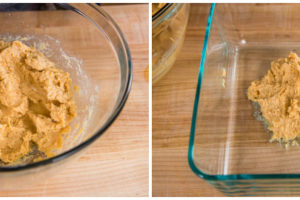
To Make Cucumber Kasuzuke
- Gather all the ingredients for cucumber kasuzuke.
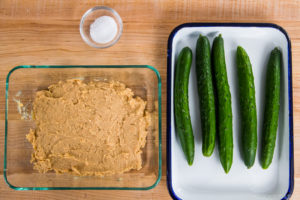
- Sprinkle salt over cucumbers. The amount of salt used is 2% of the weight of cucumber. Here I use 500 grams of cucumbers; therefore, I’ll need 10 grams of salt. Using hands, rub the salt into the cucumbers.
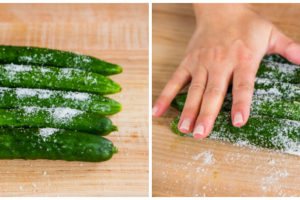
- Set aside for 1 hour. Salt will draw moisture from the cucumbers.
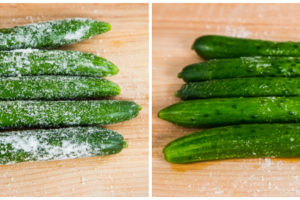
-
After 1 hour, dry the moisture on the cucumbers with a paper towel. And transfer the cucumbers into the misodoko.
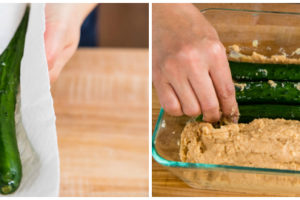
- Completely cover the cucumbers with misodoko.
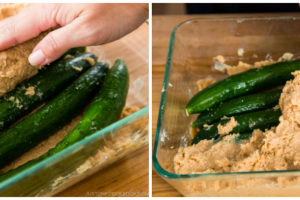
-
Once the cucumbers are embedded, cover the container with the lid. Store in the refrigerator for half day (maximum 24 hours).
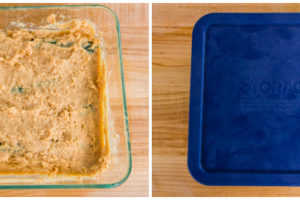
-
With clean hands, take out the cucumbers from kasudoko, leaving the sake lees in the container.
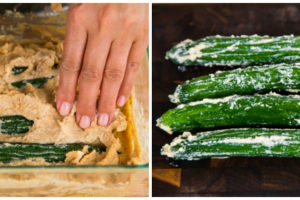
-
Slice the cucumbers and serve in a dish. Tsukemono is always served along with steamed rice and miso soup. Enjoy the cucumber kasuzuke within 3 days.
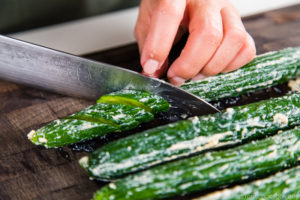
To Store
-
You can keep kasudoko in the refrigerator or freezer and re-use it for up to half a year (depending on how often you use it, though). If you use kasudoko for seafood or meat, NEVER use it for ingredients that you will serve raw, such as vegetables. You will need to make a separate batch just for meat or fish. If your kasudoko smells sour, do not use it and discard it.
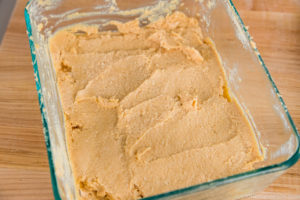
Japanese Ingredient Substitution: If you want to look for substitutes for Japanese condiments and ingredients, click here.
Recipe by Namiko Chen of Just One Cookbook. All images and content on this site are copyright protected. Please do not use my images without my permission. If you’d like to share this recipe on your site, please re-write the recipe in your own words and link to this post as the original source. Thank you.